Dry: A Weekly Western Drought Digest — July 26, 2022
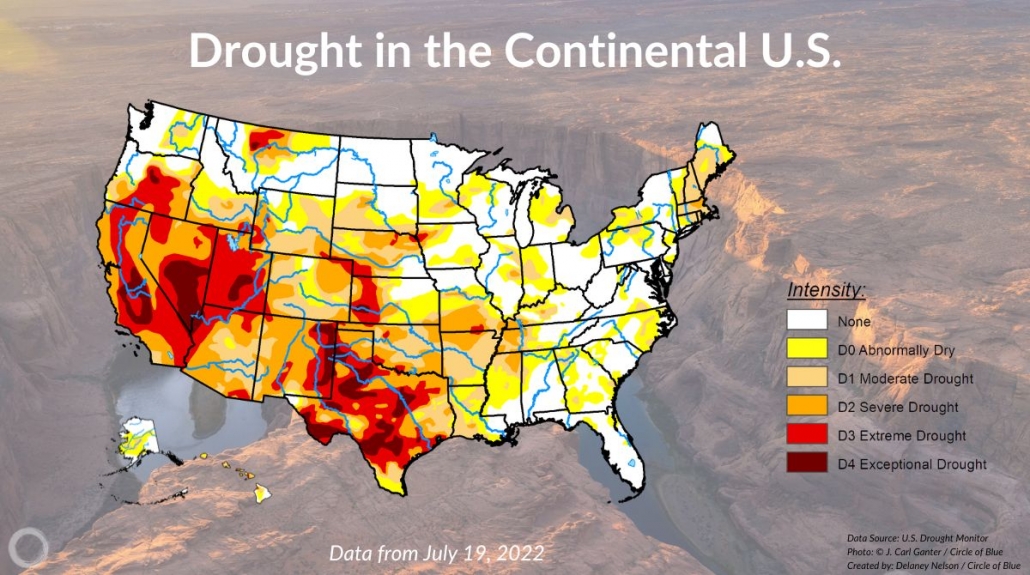
By Delaney Nelson, Circle of Blue – July 26, 2022
TOP NEWS
- As of July 19, over 44 percent of the U.S. and Puerto Rico is in drought, a nearly 12 percent increase in the last month.
- States in the Colorado River’s upper basin respond to the federal government’s call for water conservation.
- The Albuquerque stretch of the Rio Grande is drying up for the first time in almost 40 years.
- High temperatures and dry conditions are fanning the Oak fire in Mariposa County, California, which has burned more than 16,700 acres.
THE NUMBERS
Nearly 52 percent of the land area in the Lower 48 states is experiencing moderate drought or worse this week. This year continues to be the largest expanse of drought in the country since 2012-13. These conditions are affecting over 119 million people. According to the U.S. Drought Monitor, dry conditions are present across 225 million acres of cropland.
According to the National Weather Service weather prediction center, the epicenter of intense heat will shift from the Northeast to the South-Central U.S. and Pacific Northwest this week. Warmer temperatures can exacerbate drought conditions by causing more evaporation and drying out soils.
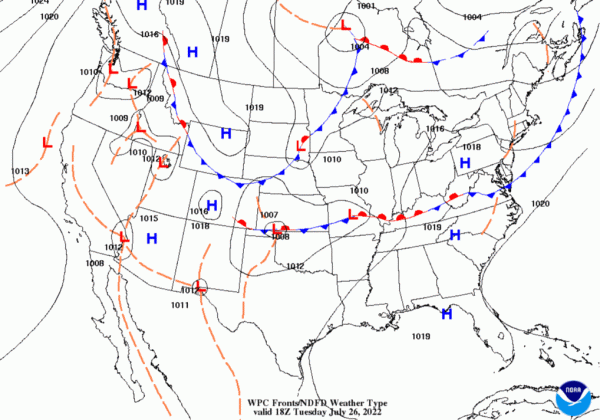
The National Weather Service forecasts intense heat will shift to the South-Central U.S. and Pacific Northwest this week.
Over 94 percent of Texas is experiencing some form of drought, and a fifth of the state is in exceptional drought. Over 22.8 million Texans are affected, including farmers experiencing decreased crop and livestock production. Cities are threatening to fine residents who violate water restrictions. Earlier this month, the North Texas Municipal Water District urged residents to reduce their water use as it had to cease water production at one of its four treatment plants. According to the utility, the system is under stress from drought combined with increased outdoor water use.
STATUS OF TOP RESERVOIRS/COLORADO RIVER
-
-
- Lake Mead is 27 percent full, at an elevation of 1,040 feet.
-
UPPER BASIN STATES PROPOSAL
In a letter to the commissioner of the Bureau of Reclamation, states in Colorado River’s upper basin pledged to implement incentive-based programs that would compensate residents to use less water, as well as continue “strict water management and administration” to reduce river water use. The declarations were made by water managers in Colorado, New Mexico, Utah and Wyoming in response to the Bureau of Reclamation’s demand that Colorado River states create a plan to conserve two million to four million acre-feet of water in the next year.
Notably, the upper basin proposal does not include any mandatory cuts and requests federal funding from the bipartisan infrastructure law to improve water management tools. The upper basin states argued that the bulk of the cuts should come from the three lower basin states and Mexico, since they use twice as much water combined as the upper basin.
NEW MEXICO
New Mexico’s “Albuquerque reach” of the Rio Grande is drying up, with stretches of once-flowing water now patches of mud and sand. While it is not unusual for more southern stretches of the river to dry up, this 100-mile portion in Albuquerque, which supplies farmers, has not dried up since 1983. The depleted river is also endangering fish such as the silvery minnow. As of July 19, over 98 percent of New Mexico is in moderate to exceptional drought, affecting two million people. The Climate Prediction Center forecasts that temperatures in New Mexico in the next three months are likely to be above normal. Forecasts also show a slight chance of lower-than-normal precipitation.
CALIFORNIA
In the two days that the Oak fire in Mariposa County, California, has been active, the flames have burned over 16,700 acres amid dry conditions and triple-digit temperatures. The state’s largest fire this year is only 10 percent contained. The fire has destroyed seven single-residence structures, according to the state’s fire agency. Gov. Gavin Newsom declared a state of emergency for Mariposa County, which has told 3,000 people to evacuate their homes. Almost the entire state is experiencing some form of drought, and nearly 60 percent is in extreme to exceptional drought.
WHAT’S AHEAD
The U.S. House of Representatives is expected to vote this week on a wildfire and drought package intended to tackle the climate crisis. If passed, the 48-bill package would allocate up to $500 million to the Interior Department to address declining water levels in Lakes Powell and Mead. It would also establish a multi-agency initiative to enhance federal water data, allocate more funding to a water recycling program and implement cost-sharing requirements to ease tribal access to conservation projects. House Republicans oppose many provisions of the package, E&E News reports.
Delaney Nelson is an intern for Circle of Blue covering drought in the American West. She writes Circle of Blue’s weekly roundup of drought in the American West. She’s a rising senior at Northwestern University studying journalism, political science, Spanish and environmental policy. In her free time, she likes to hang out with her dogs, play soccer and swim in Lake Michigan.

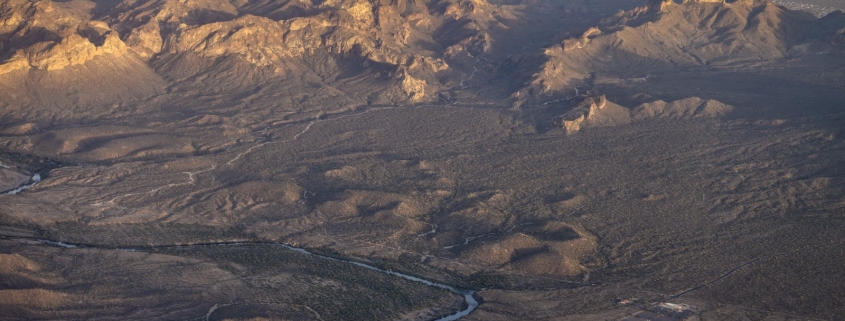 © J. Carl Ganter / Circle of Blue
© J. Carl Ganter / Circle of Blue
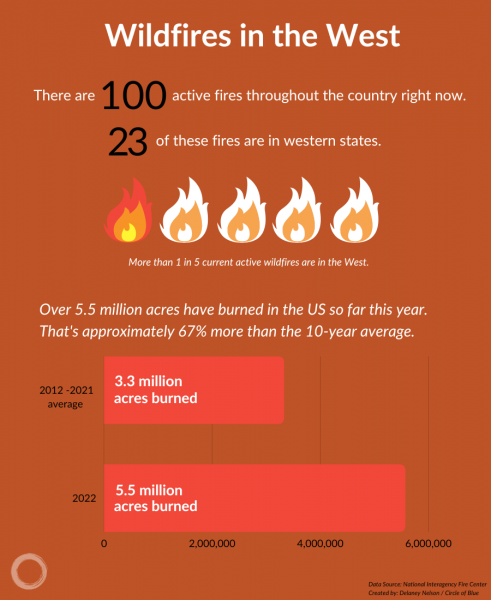

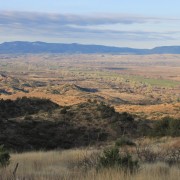

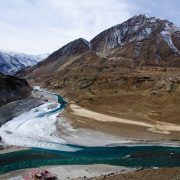
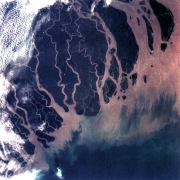
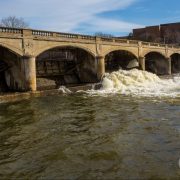



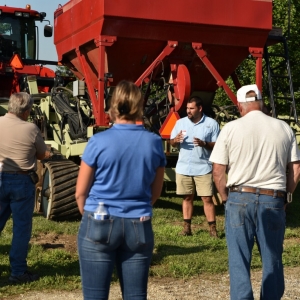

Short finding someone who genuinely knows how to do a rain dance the interim solution for the southwest is simple
1- This is a regional or national problem and needs to be resolved at the federal level
2- Conservation is key. We must install leak detection and ban the watering of ornamental grass.
3- The tapping of Aquaphor’s needs to be regulated.
4- Those states that depend on the Colorado River need to agree to:
A: CA will give up all CO River water
B: The remaining states that receive CO River water must compensate CA by paying for a desalinization plant(s) sufficient to make up for the water lost to the state of CA.